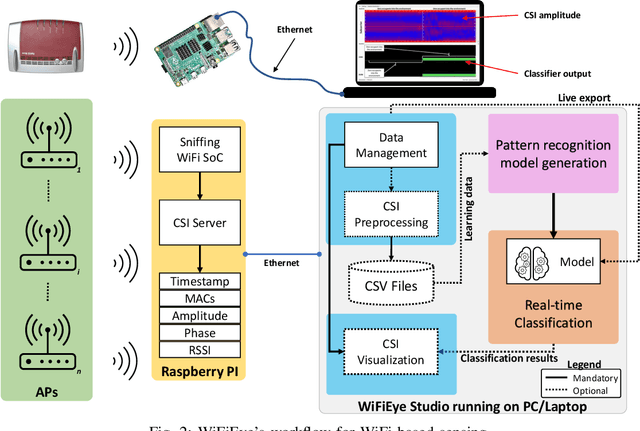Philipp H. Kindt
A Comprehensive Review of Automated Data Annotation Techniques in Human Activity Recognition
Jul 12, 2023Abstract:Human Activity Recognition (HAR) has become one of the leading research topics of the last decade. As sensing technologies have matured and their economic costs have declined, a host of novel applications, e.g., in healthcare, industry, sports, and daily life activities have become popular. The design of HAR systems requires different time-consuming processing steps, such as data collection, annotation, and model training and optimization. In particular, data annotation represents the most labor-intensive and cumbersome step in HAR, since it requires extensive and detailed manual work from human annotators. Therefore, different methodologies concerning the automation of the annotation procedure in HAR have been proposed. The annotation problem occurs in different notions and scenarios, which all require individual solutions. In this paper, we provide the first systematic review on data annotation techniques for HAR. By grouping existing approaches into classes and providing a taxonomy, our goal is to support the decision on which techniques can be beneficially used in a given scenario.
WiFiEye -- Seeing over WiFi Made Accessible
Apr 06, 2022



Abstract:While commonly used for communication purposes, an increasing number of recent studies consider WiFi for sensing. In particular, wireless signals are altered (e.g., reflected and attenuated) by the human body and objects in the environment. This can be perceived by an observer to infer information on human activities or changes in the environment and, hence, to "see" over WiFi. Until now, works on WiFi-based sensing have resulted in a set of custom software tools - each designed for a specific purpose. Moreover, given how scattered the literature is, it is difficult to even identify all steps/functions necessary to build a basic system for WiFi-based sensing. This has led to a high entry barrier, hindering further research in this area. There has been no effort to integrate these tools or to build a general software framework that can serve as the basis for further research, e.g., on using machine learning to interpret the altered WiFi signals. To address this issue, in this paper, we propose WiFiEye - a generic software framework that makes all necessary steps/functions available "out of the box". This way, WiFiEye allows researchers to easily bootstrap new WiFi-based sensing applications, thereby, focusing on research rather than on implementation aspects. To illustrate WiFiEye's workflow, we present a case study on WiFi-based human activity recognition.
Estimating indoor occupancy through low-cost BLE devices
Jan 30, 2021



Abstract:Detecting the presence and estimating the number of subjects in an indoor environment has grown in importance recently. For example, the information if a room is unoccupied can be used for automatically switching off the light, air conditioning, and ventilation, thereby saving significant amounts of energy in public buildings. Most existing solutions rely on dedicated hardware installations, which involve presence sensors, video cameras, and carbon dioxide sensors. Unfortunately, such approaches are costly, subject to privacy concerns, have high computational requirements, and lack ubiquitousness. The work presented in this article addresses these limitations by proposing a low-cost system for occupancy detection. Our approach builds upon detecting variations in Bluetooth Low Energy (BLE) signals related to the presence of humans. The effectiveness of this approach is evaluated by performing comprehensive tests on 5 different datasets. We apply different pattern recognition models and compare our methodology with systems building upon IEEE 802.11 (WiFi). On average, in different environments, we can correctly classify the occupancy with an accuracy of 97.97\%. When estimating the number of people in a room, on average, the estimated number of subjects differs from the actual one by 0.32 persons. We conclude that the performance of our system is comparable to existing ones based on WiFi, while leading to a significantly reduced cost and installation effort. Hence, our approach makes occupancy detection practical for real-world deployments.
 Add to Chrome
Add to Chrome Add to Firefox
Add to Firefox Add to Edge
Add to Edge